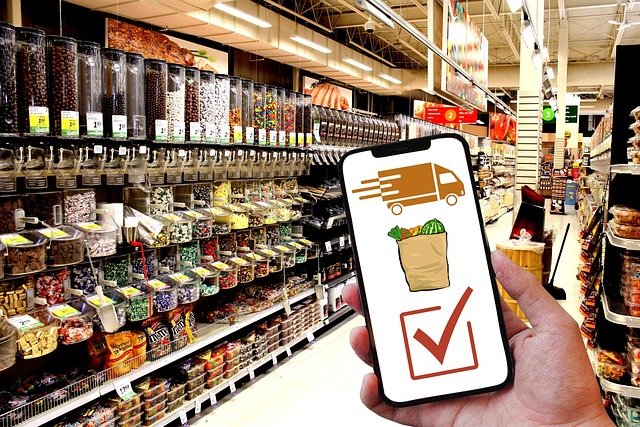Grocery Delivery or Pickup from Local Stores Near You
Modern grocery shopping has evolved beyond traditional store visits, offering convenient alternatives that fit busy lifestyles. Grocery delivery and pickup services have transformed how consumers access fresh produce, pantry staples, and household essentials. These services connect shoppers with local stores through digital platforms, enabling orders from smartphones or computers. Whether you're managing a hectic schedule, avoiding crowded stores, or simply preferring the convenience of having groceries brought to your doorstep, understanding these options can streamline your shopping experience and save valuable time.

The landscape of grocery shopping has dramatically shifted in recent years, with delivery and pickup services becoming essential components of retail strategy. These services bridge the gap between traditional in-store shopping and modern consumer demands for convenience, accessibility, and time efficiency.
What is grocery delivery and pickup?
Grocery delivery and pickup represent two distinct service models that eliminate the need for traditional in-store shopping experiences. Delivery services bring groceries directly to customers’ homes or specified locations, while pickup services allow customers to order online and collect their items from designated store locations without entering the store. Both services typically operate through mobile applications or websites where customers browse product catalogs, add items to digital carts, and complete transactions electronically. These services have become particularly valuable for individuals with mobility challenges, busy professionals, families with young children, and anyone seeking to minimize time spent in crowded retail environments.
How does grocery delivery work?
The grocery delivery process begins when customers access a retailer’s digital platform to browse available products from participating stores. After selecting items and completing checkout, the order enters a fulfillment system where store employees or dedicated shoppers gather the requested products. Professional shoppers often communicate with customers regarding substitutions for out-of-stock items, ensuring satisfaction with replacements. Once the order is complete, delivery personnel transport the groceries using various methods, from personal vehicles to specialized delivery trucks with temperature-controlled compartments. Delivery windows typically range from same-day service to scheduled slots several days in advance, with some services offering express delivery within hours. Payment processing occurs digitally, and customers can add tips for delivery personnel through the platform.
Which local stores offer delivery services in your area?
Major grocery chains across the United States have embraced delivery and pickup services, partnering with third-party platforms or developing proprietary systems. National retailers like Walmart, Target, Kroger, Safeway, and Whole Foods Market offer comprehensive delivery coverage in most metropolitan areas. Regional chains such as H-E-B in Texas, Wegmans in the Northeast, and Publix in the Southeast provide localized service options tailored to their markets. Many independent grocery stores have also adopted these services through partnerships with delivery platforms, ensuring customers can access local specialties and community-focused retailers. Availability varies significantly by location, with urban areas typically offering more options and faster delivery times compared to rural regions. Customers can verify local availability by entering their zip code on retailer websites or delivery platform applications.
What are the leading grocery delivery platforms?
Several prominent platforms dominate the grocery delivery market, each offering unique features and store partnerships. Instacart serves as one of the largest third-party delivery services, partnering with numerous retailers nationwide and providing same-day delivery from multiple stores through a single platform. Amazon Fresh and Whole Foods delivery leverage Amazon’s logistics network to offer Prime member benefits and integrated shopping experiences. Shipt, owned by Target, provides delivery services for Target stores and other retail partners, emphasizing personalized shopping experiences.
| Platform | Primary Partners | Average Delivery Fee | Membership Options |
|---|---|---|---|
| Instacart | Costco, Kroger, Safeway | $3.99-$7.99 | Instacart+ $99/year |
| Amazon Fresh | Whole Foods, Amazon | $9.95 (Free with Prime) | Prime $139/year |
| Shipt | Target, Meijer, CVS | $7-$10 | Shipt $99/year |
| Walmart+ | Walmart stores | Free with membership | Walmart+ $98/year |
| DoorDash | Various local stores | $1.99-$4.99 | DashPass $9.99/month |
Prices, rates, or cost estimates mentioned in this article are based on the latest available information but may change over time. Independent research is advised before making financial decisions.
The grocery delivery and pickup landscape continues evolving as retailers invest in technology infrastructure and logistics capabilities. These services have proven their value during challenging times and are now integral parts of modern retail strategy. Understanding available options in your area can help you make informed decisions about incorporating these convenient services into your routine, potentially saving time while maintaining access to quality groceries and household essentials.




